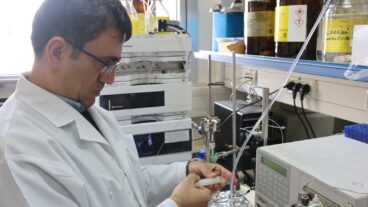I estimate that for about 90 percent of halitosis suffers, the origin of their problem is not dental or paradental diseases but rather in the tonsils – Prof. Yehuda Finkelstein.You brush regularly, you floss, you pop Tic Tacs. Yet, you’re still plagued by that offensive odor – technically called halitosis, but which everybody knows as bad breath.
An Israeli researcher has finally discovered the root cause of one of the most severe forms of halitosis, and a way to cure it – and its roots surprisingly are not in the teeth or the gums, but in the tonsils.
Mild halitosis usually results from anaerobic bacteria breeding in shallow cavities in the gums or teeth. They release foul-smelling gases such as hydrogen sulfide. Routine dental treatment, regular brushing and mouthwashes usually solve this problem. But there are more persistent cases and Professor Yehuda Finkelstein of the Meir Hospital at the Sapir Medical Center in Kfar Saba, has found that the tonsils are often to blame.
“I estimate that for about 90 percent of halitosis suffers, the origin of their problem is not dental or paradental diseases but rather in the tonsils,” Finkelstein told ISRAEL21c. “The tonsils are ideal for the anaerobic bacteria to hide in – there are many tubular grooves where these microbes can thrive.”
“Surprisingly, historically tonsils have been overlooked as a source of halitosis, but in fact most of the patients suffering from halitosis are suffering from chronic inflammation of the tonsils caused by anaerobic bacteria. The symptom, instead of pain, is bad breath,” added Finkelstein.
But not only has Finkelstein discovered the source of the potentially embarrassing chronic odor, he has also provided a clinically proven solution to the problem – laser treatment.
Finkelstein and his team at the hospital successfully conducted a 15 minute laser treatment session on 53 patients. As reported in the current issue of New Scientist, the result was that their bad breath was banished for good.
During their examinations of the patients, the scientists found no other mouth problems, but when they squeezed and massaged the patients’ tonsils there was a foul-smelling discharge, suggesting the problem was fetid tonsils.
All of the patients were then treated with a single 15-minute session of laser therapy to the tonsils. The were re-examined four to six weeks later to see if the treatment had worked. Twenty-eight of the patients were cured after the first session and the rest were cured after a further one or two sessions.
“In about half the patients, one treatment is enough. There are those that need more than one. The idea is not to evaporate too much tissue, which could result in pain,” said Finkelstein.
The laser works by vaporizing the infected tissue and seals the crypts by creating scar tissue that bacteria cannot colonize. It can be carried out while the patient is awake in an office setting with the use of an anesthetic spray to the tonsils.
“I’ve developed a systematic clinical approach by which you can exactly define and locate the origin of the problem of halitosis,” Finkelstein summed up. “And we can solve the problem by evaporating part of the tonsil where the bacteria can hide with laser treatment.”
So say goodbye forever to that nagging bad breath that’s been plaguing you. If brushing your teeth and gums don’t help, remember Professor Finkelstein’s laser therapy. It will leave you breathing easier.












